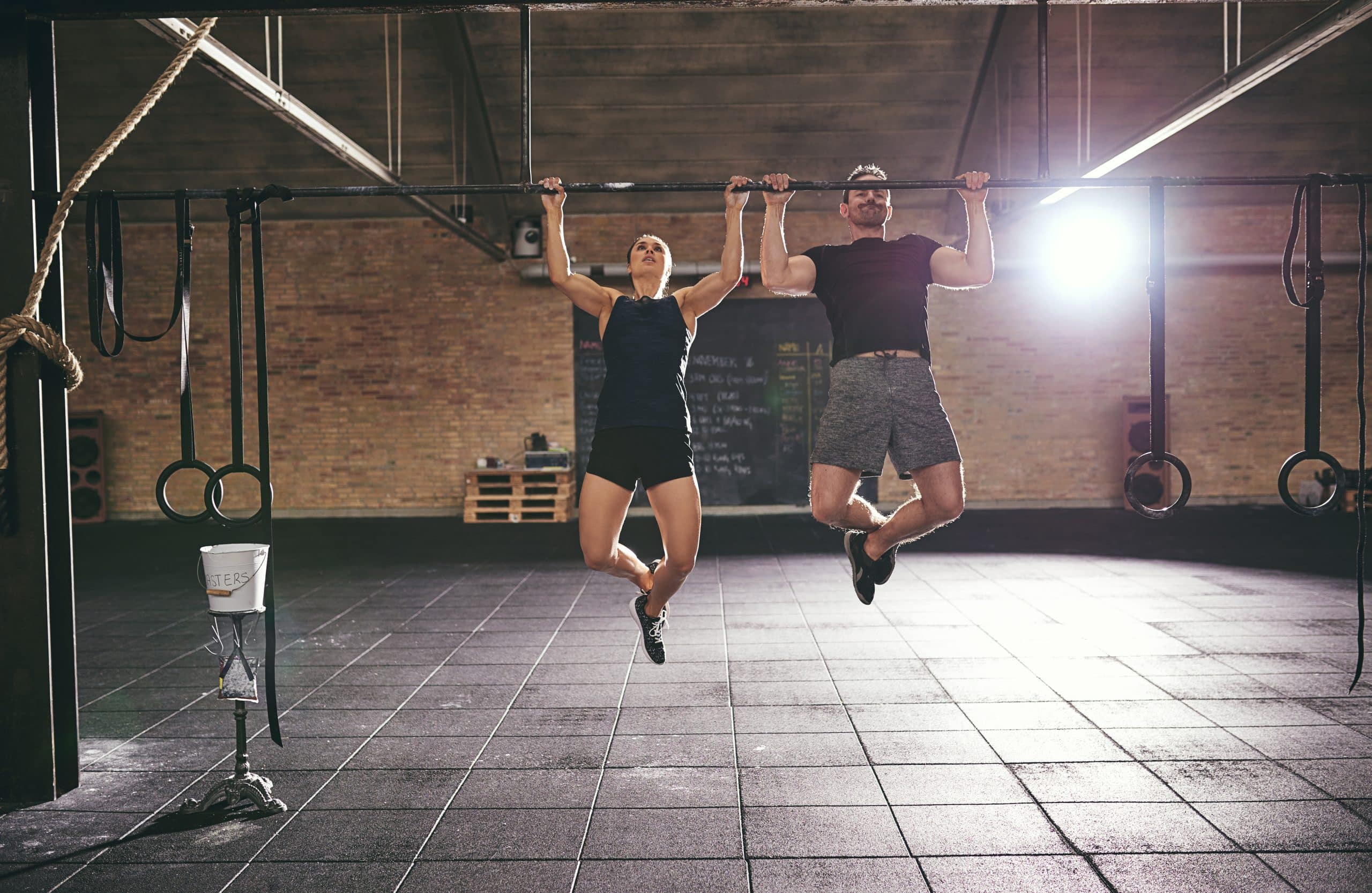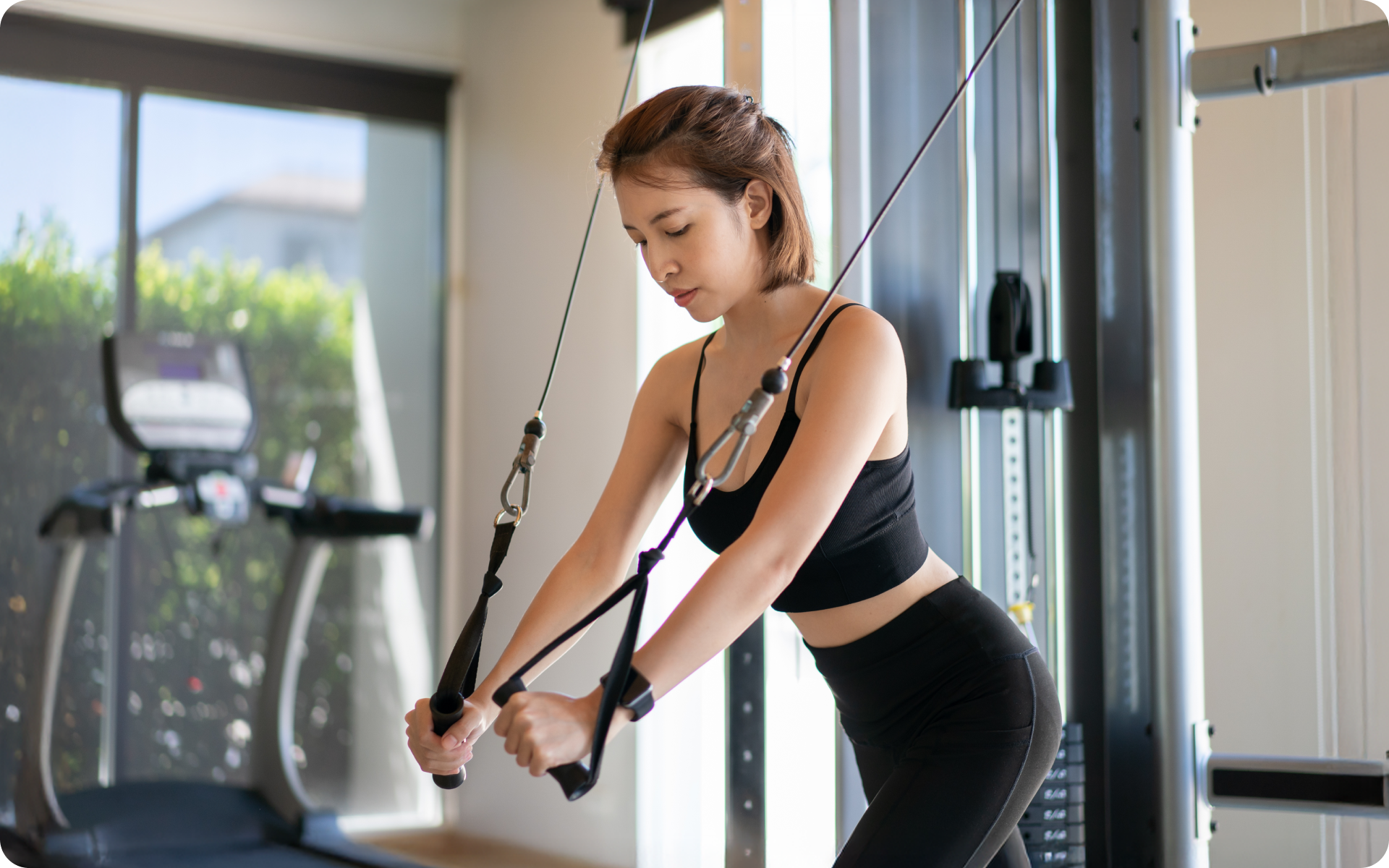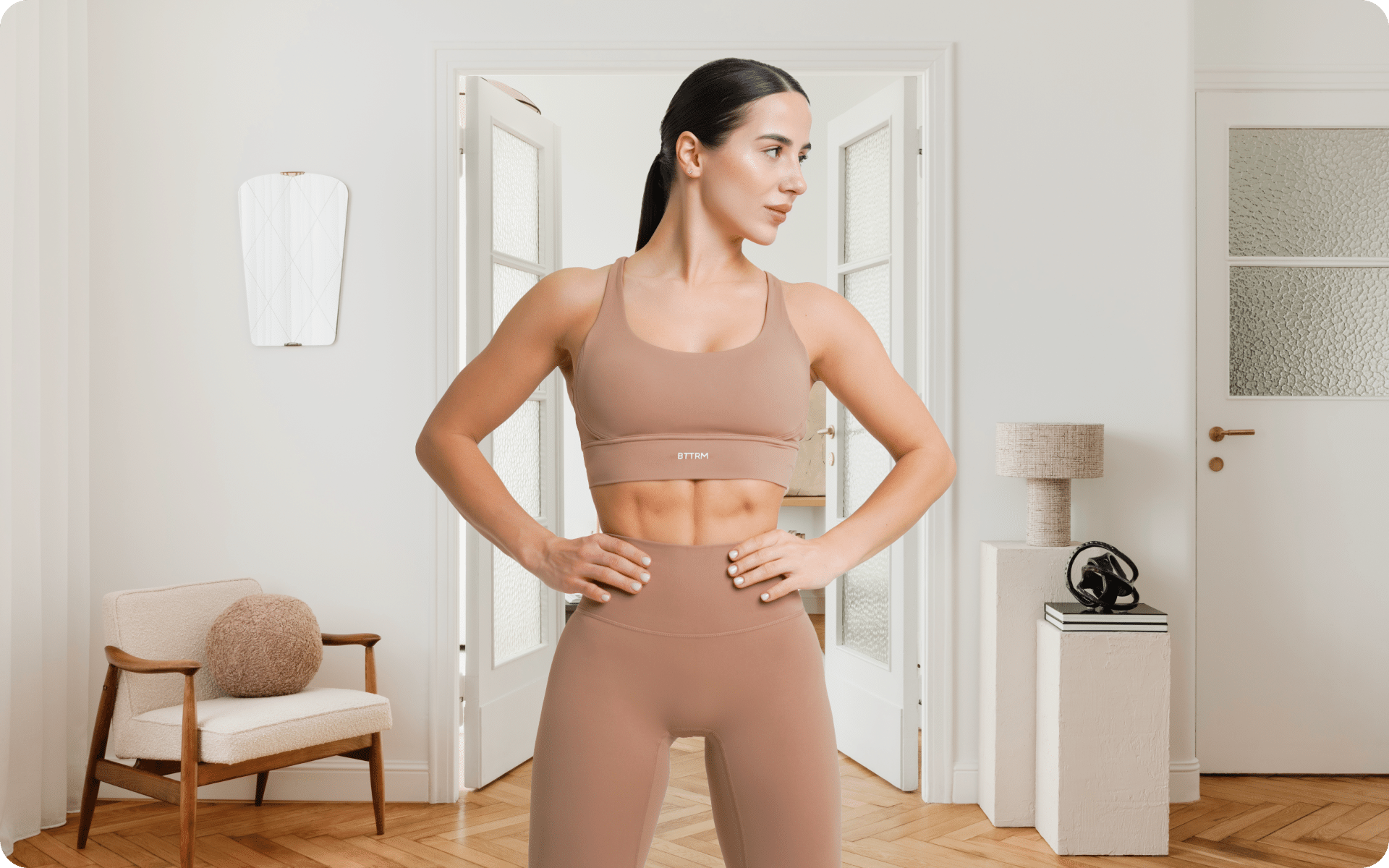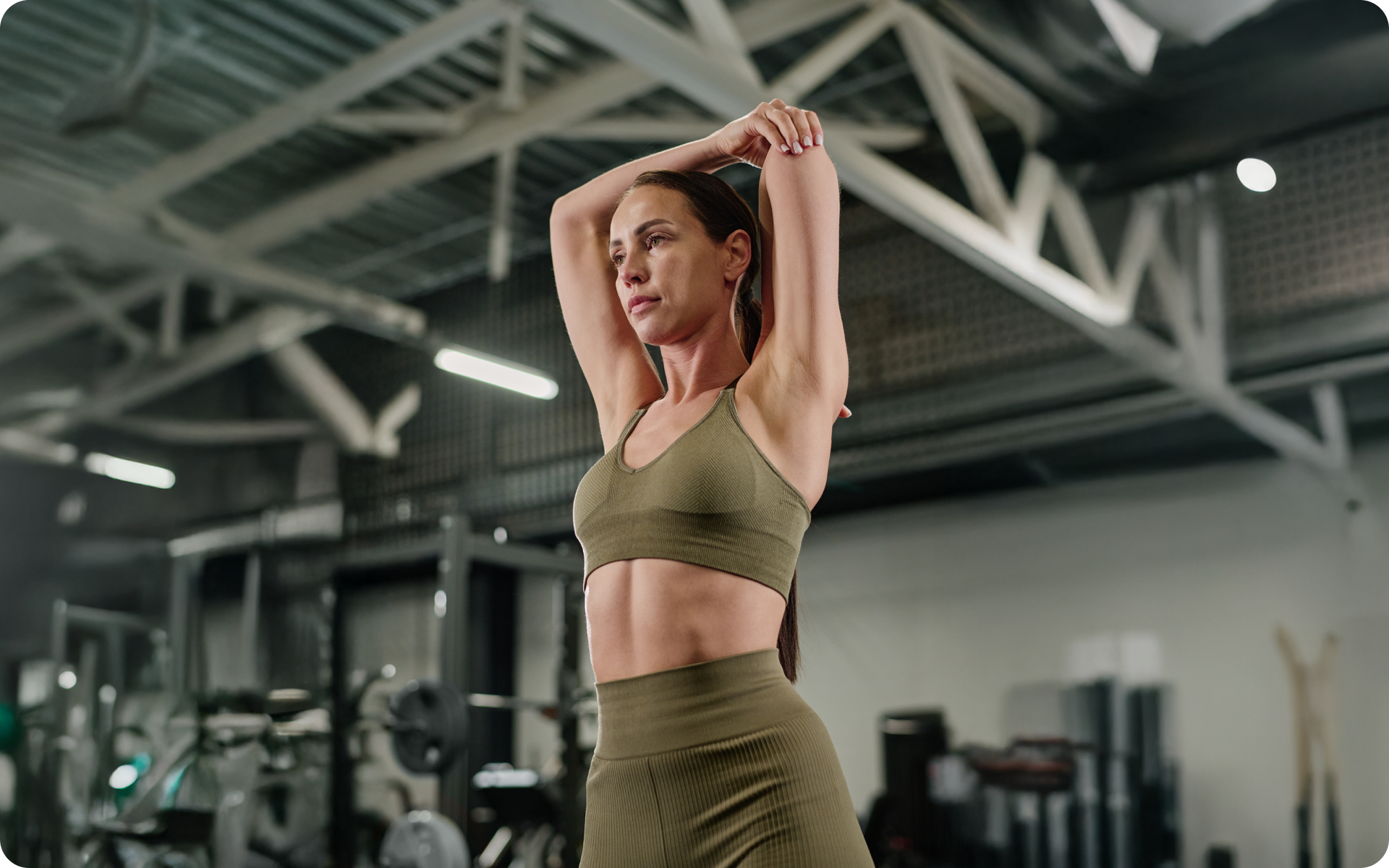A PPL (push-pull-legs) split is a classic routine in the world of fitness and divides workouts into push days, pull days, and leg days.
On pull days, focus is on exercises that require pulling movements, targeting muscles such as the back, biceps, traps, and forearms.
These muscles are involved in everyday activities from lifting grocery bags to pulling open doors. Also, strengthening these muscle groups can significantly improve your overall physique and posture.
In this guide, we’ll cover all you need to know about a pull day workout. From the king of all exercises, the deadlift, to the upper body sculptor, the pull-up, we’ll break down what each exercise involves, how to perform them with correct form, when to incorporate them in your workout routine, and everything in between.
What Should I Work Out on a Pull Day?
On pull day, you’ll target upper-body muscles that require pulling movements. This includes the back muscles, biceps, traps, and forearms. Here’s a breakdown of pull day muscles anatomy and function:
- Back Muscles: The back muscles are divided into the upper, middle, and lower back. These muscles include the lats, traps, rhomboids, and erector spinae. The main function of these muscles is to stabilize the spine and allow the performance of different movements such as pulling movements.
- Biceps: Located in the front of your arms, biceps are involved in pulling movements such as rows and chin-ups. They also help with elbow flexion, which is important for everyday activities such as picking up objects.
- Traps: Short for trapezius, traps are located on the upper back and connect to the neck, shoulders, and spine. These muscles are responsible for shoulder blade movement and posture.
- Forearms: The forearms are involved in gripping and pulling movements, which makes them essential for exercises such as pull-ups, deadlifts, and rows. Strengthening your forearms can also help prevent injuries.
Read more in our blog on Pull-Ups: Muscles Worked to learn more about the importance of these muscles in your workout routine.
If you tend to let yourself off the hook, raise the white flag when things get tougher than you expected, send yourself on an unconscious binge-eating trip – BetterMe app is here to help you leave all of these sabotaging habits in the past!
Exercises to Incorporate in Your Pull Day Workout
On a pull day, you should focus on exercises that involve pulling movements. This includes exercises such as deadlifts, pull-ups, rows, and lat pulldowns.
Deadlifts
The deadlift is considered to be the king of all exercises for a reason. It’s a compound lift that targets multiple muscle groups such as the back, glutes, hamstrings, and even your core.
To perform a deadlift:
- Start with a barbell on the floor in front of you.
- Stand with your feet hip-width apart and your toes pointing directly ahead.
- Bend your knees and hinge at the hips to grasp the barbell with an overhand or mixed grip.
- Keep your back flat, engage your lats and pull the weight up by pushing through your whole foot into the group until you reach a standing position.
- Slowly lower the weight back to the starting position and repeat for the desired number of reps.
Rows
There are various types of rows you can incorporate into your pull day workout, including barbell rows, dumbbell rows, and cable rows. All of these variations target different parts of your back muscles.
To perform a barbell row:
- Start with a loaded barbell on the floor in front of you.
- Stand with your feet shoulder-width apart, bend your knees, and hinge at the hips to grab the barbell with an overhand grip. Your arms should be fully extended.
- Engage your back muscles and pull the weight toward your chest, keeping your elbows close to your body.
- Slowly lower the weight back to the starting position and repeat for the desired number of reps.
Pull-ups
The pull-up is another compound exercise that targets multiple muscles in the upper body, including the back, biceps, and shoulders.
To perform a pull-up:
- Grab a pull-up bar with an overhand grip, hands slightly wider than shoulder-width apart.
- Engage your core and shoulder blades, initiate the movement by driving your elbows down to pull your body up until your chin reaches the bar.
- Slowly lower yourself back down to the starting position and repeat for the desired number of reps.
Lat Pulldowns
This exercise is a great alternative to pull-ups, particularly if you’re not yet able to do them with correct form. It targets similar muscles as the pull-up but can be easily adjusted for different fitness levels.
To perform a lat pulldown:
- Start by sitting at a lat pulldown machine with your feet flat on the ground and your knees bent.
- Grab onto the bar with an overhand grip, hands slightly wider than shoulder-width apart.
- Engage your back muscles and pull the bar down towards your chest.
- Slowly release the bar back to the starting position and repeat for the desired number of reps.
Read more: Beginner Workout for Lower Butt (Exercises, Sample Routine and More)
Face Pulls
The face pull is a versatile exercise that targets the rear deltoids, traps, and upper-back muscles, which promotes good shoulder health and posture.
To perform face pulls:
- Start by standing in front of a cable machine with the pulley set to chest height.
- Grab the rope attachment with an overhand grip, hands shoulder-width apart.
- Pull the rope toward your face, keeping your elbows high.
- Slowly release the rope back to the starting position and repeat for the desired number of reps.
Cable Pullovers
Cable pullovers focus on the lats, triceps, and deltoids and offer a full upper-body workout.
To perform cable pullovers:
- Start by standing in front of a cable machine with the pulley set to the highest level.
- Grab the straight bar attachment with an overhand grip.
- Keeping your arms straight, pull the bar down and across your body until it reaches your hips.
- Slowly raise the bar back to the starting position and repeat for the desired number of reps.
Hammer Curls
This bicep-focused exercise also engages the forearms and helps improve grip strength.
To perform hammer curls:
- Stand with a dumbbell in each hand, arms fully extended, and palms facing your torso.
- Keeping your elbows close to your body, curl the weights while keeping the palms facing each other.
- Slowly lower the dumbbells back to the starting position and repeat for the desired number of reps.
Cable Rows
A versatile pulling exercise, cable rows target the lats, traps, and rhomboids.
To perform cable rows:
- Sit at a low pulley cable station with a V-bar handle attachment.
- Keeping your back straight, pull the handles toward your waist.
- Slowly release the handles back to the starting position and repeat for the desired number of reps.
Shrugs
Shrugs are a classic trap-building exercise that also engage the shoulders and upper back.
To perform shrugs:
- Stand with a barbell or dumbbells in your hands, arms fully extended, and palms facing your torso.
- Raise your shoulders as high as possible – imagine you’re trying to touch your shoulders to your ears.
- Slowly lower the weights back to the starting position and repeat for the desired number of reps.
How Do You Pull at the Gym?
Pulling at the gym refers to exercises that can be done using a barbell, dumbbells, or cable machines, in addition to bodyweight exercises such as pull-ups or rows. These exercises target the muscles in your back, arms, and shoulders.
Barbell – a barbell is a versatile tool that can be used for various pulling exercises, such as rows and deadlifts. It allows you to lift heavier weights and engage multiple muscle groups simultaneously.
Dumbbells – dumbbells offer more freedom of movement than barbells, which makes them ideal for targeting specific areas of your back muscles. They also help improve grip strength and symmetry between both arms.
Cable Machines – cable machines provide constant tension throughout the entire range of motion, which makes them effective for building strength and muscle endurance. They also offer a wide range of exercises for different muscle groups.
Bodyweight Exercises – exercises such as pull-ups and rows use your own body weight as resistance, which makes them challenging but effective for building back muscles. These can also be modified for different fitness levels and goals.
Generally, it’s important to focus on proper form and technique when pulling at the gym to avoid injury and maximize results.
Where necessary, use a spotter or seek guidance from a certified trainer to ensure you are performing the exercises correctly and safely.
This 3-Day Push Pull Workout guide has more detailed information and a sample workout plan to help you get started on your journey toward a stronger back.
BetterMe app is a foolproof way to go from zero to a weight loss hero in a safe and sustainable way! What are you waiting for? Start transforming your body now!
When Should I Incorporate Pull Day Workouts?
As mentioned earlier, a PPL split typically involves three days of working out and one day of rest. You can incorporate pull day workouts into your routine by alternating them with your push and legs days.
For example:
Day 1: Push day
Day 2: Rest
Day 3: Leg day
Day 4: Rest
Day 5: Pull day
Day 6: Rest
Day 7: Rest
Alternatively, you can incorporate pull day workouts into a full-body workout routine by including exercises such as deadlifts and rows in your session.
Our 4-day Push Pull Workout Routine further discusses how to properly structure a PPL split and incorporate pull day workouts for optimal results.
Are 4 Exercises Enough for Pull Day?
Four exercises can be enough for pull day if:
- You’re a beginner who is just starting to incorporate pull day workouts into your routine.
- Your workout includes compound exercises like deadlifts, which target multiple muscle groups.
- Your workout also includes variations of each exercise, such as barbell rows and cable rows, to target different parts of your back muscles.
However, as you progress in your fitness journey, you may want to increase the number of exercises for a more challenging workout (3).
We recommend a total of 6-8 exercises for a complete pull day workout, including variations and different types of rows, pull-ups, and other pulling movements (2). This will ensure that you target all the muscles in your back and achieve maximum results.
What Legs Exercises Are Best for Pull Day?
Leg exercises usually fall under the ‘leg day’ category in a PPL split and aren’t typically incorporated into a pull day workout. However, some exercises such as deadlifts can also be considered as ‘pull’ movements and engage the muscles in your legs, specifically the glutes and hamstrings.
Other leg exercises that can potentially be included in a pull day workout are hack squats, Romanian deadlifts, or any hamstring curl variations that use cable machines. However, it’s important to prioritize the muscles in your back when planning a pull day workout and only include leg exercises if time permits.
Read more: Ultimate Abs And Butt Workout For Flat Stomach And Bigger Butt
FAQs
What is a typical pull day?
A typical pull day is part of a training split known as PPL (push, pull, legs), where you dedicate an entire training session to pulling exercises. This day primarily targets the back muscles (such as lats and traps), in addition to the biceps and forearms. Exercises such as rows, pull-ups, pulldowns, and curls are common on pull days.
What is the 3 2 8 method?
The 3 2 8 method is a training protocol that involves performing three sets of two different exercises with eight repetitions each (1). It’s a simple yet effective way of increasing the volume and intensity in your workout. This method allows you to target a specific muscle group from different angles and with different exercises to promote well-rounded strength and muscle growth
How do you structure a pull day workout?
Structuring a pull day workout starts with identifying the muscles you need to target, which typically include your back, biceps, and forearms. Start with compound movements such as deadlifts or rows that work multiple muscle groups at once.
Follow this with isolation exercises that focus on specific muscles such as bicep curls or shrugs. The number of exercises, sets, and reps you should perform will be dependent on your fitness level and goals. You should aim to include 6-8 exercises in your pull day workout for a comprehensive session.
The Bottom Line
A well-structured pull day workout can help you build strength and muscle in your back, arms, and shoulders. You should incorporate a variety of exercises that require different equipment to target all the muscles in your back and modify the routine as needed depending on your fitness level and goals. Remember to practice proper form and seek guidance if necessary to ensure a safe and effective workout.
DISCLAIMER:
This article is intended for general informational purposes only and does not serve to address individual circumstances. It is not a substitute for professional advice or help and should not be relied on for making any kind of decision-making. Any action taken as a direct or indirect result of the information in this article is entirely at your own risk and is your sole responsibility.
BetterMe, its content staff, and its medical advisors accept no responsibility for inaccuracies, errors, misstatements, inconsistencies, or omissions and specifically disclaim any liability, loss or risk, personal, professional or otherwise, which may be incurred as a consequence, directly or indirectly, of the use and/or application of any content.
You should always seek the advice of your physician or other qualified health provider with any questions you may have regarding a medical condition or your specific situation. Never disregard professional medical advice or delay seeking it because of BetterMe content. If you suspect or think you may have a medical emergency, call your doctor.
SOURCES:
- Loading Recommendations for Muscle Strength, Hypertrophy, and Local Endurance: A Re-Examination of the Repetition Continuum (202,nih.gov)
- Is the 3-2-8 Method Really a Good Workout Routine? (2023,nih.gov)
- Progression of volume load and muscular adaptation during resistance exercise (nih.gov)










